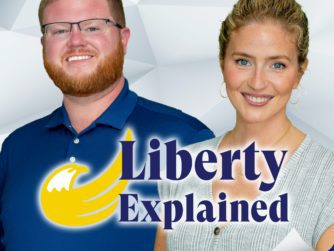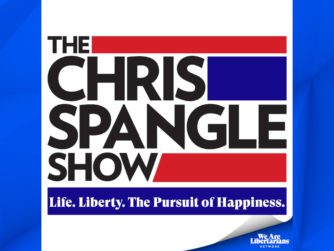I swear, I could almost teach an econ course after the last two weeks. I will be so glad when politics goes back to less complicated issues, like lipstick and guns. One of the issues I worry about with the Paulson Plan is the actual execution of the plan. Are we really going to let a low paid government worker with no vested interest manage trillions of dollars? We are begging for corruption, and a lack of focus. We are asking for another massive governmental failure that will cost us more. So let Wall Street manage it. Bill Gross of Pimco has offered to manage this, and he is a highly respected and successful guy.
I also highly recommend reading some of the papers over at Cato, found here. Arnold King’s article is a must read, or listen to a podcast here or below.
I would like to introduce a second plan that some economists are backing, and politicians are rejecting. I have copied and pasted from here.
A Matched Preferred Stock plan for government assistance
by Charles Calomiris
The US government is considering broad-based assistance to stem the financial crisis. Hank Paulson, Treasury secretary, and Ben Bernanke, Fed chairman, have proposed the establishment of an entity that would purchase subprime-related assets from troubled financial institutions.
A broad-based approach is needed, but this is not the best way of achieving policymakers’ objectives. Government injections of preferred stock into banks, advocated by Senator Charles Schumer, inspired by the Reconstruction Finance Corporation’s policies in the 1930s, would be a better choice. Pricing subprime instruments for purchase would be very challenging, and fraught with potentially unfair and hard-to-defend judgments. If the price were too low, that could hurt selling institutions; if it were too high, that could harm taxpayers. Who would determine how much should be purchased from whom in order to achieve the desired systemic risk reduction consequences at least cost to taxpayers? How would the purchasing entity dispose of its assets?
Preferred stock assistance would leave asset valuation and liquidation decisions to the private sector, but would provide needed recapitalization assistance to banks in an incentive-compatible manner to facilitate banks’ abilities to maintain and grow assets. If executed properly, it would limit taxpayers’ loss exposure, and leave the tough decisions of managing assets, and deciding on how to allocate capital assistance from the taxpayers, to the market.
Preferred stock assistance would work best if it were required to be matched by common stock issues underwritten by the private sector, which would ensure the proper targeting of assistance, and force private parties rather than taxpayers to bear first-tier losses. Banks in need of capital would apply for Matched Preferred Stock (MPS) assistance. Initially, say for three years, there would be no dividend paid to the government on MPS. That subsidy would increase the net worth of the recipient and facilitate raising additional capital via common stock.
Any US-based financial institution could apply for US government-held MPS (foreign-based banks could also apply if foreign governments were willing to provide MPS financing). To ensure that MPS is only supplied as truly needed from a systemic standpoint, and to limit any abuse of the taxpayer-provided subsidy, the private sector would also be required to act collectively to help recapitalize undercapitalized banks, and share the risks associated with recapitalizing banks.
Specifically, to qualify for MPS assistance from the government, a bank would have to first obtain approval from “the Syndicate” of private banks (including the major institutions who would benefit from the plan as well as others who would benefit from the reduction in systemic risk) to commit to underwrite common stock of the institution receiving MPS in an amount equal to, say, at least 50 per cent of the amount of MPS it is applying for (at a price agreed between the Syndicate and the bank at the time of its application fro MPS). The Syndicate would share the underwriting burden on some pro rata basis. To support that underwriting, the Syndicate would have access to a line of credit from the US government (and from other countries’ governments, if non-US banks participate in the MPS system). By making the government’s underwriting support senior to the Syndicate, the taxpayer would be protected by the aggregate resources of the private financial system. For banks participating in the MPS plan that are based outside the US, foreign governments would have to provide the MPS investments. Presumably, those foreign governments would also provide the credit line commitment to the syndicate for its underwriting of common stock.
Crucially, matching ensures first-tier loss sharing by the private sector (in a properly diversified way), which in turn ensures that unless the bank is worth assisting for systemic purposes, and viable upon receiving assistance, it will not receive assistance. This arrangement also protects taxpayers (since they only bear second-tier losses – that is, the risk of loss on preferred stock, which is senior to the old and new common stock). First-tier private sector loss sharing alongside government assistance is a time-honored tradition, which incentivizes the private sector to limit its requests for government assistance. In 1890, for example, the Bank of England was willing to assist in the bailout of Barings only on condition that the London banks bore the first tier of losses resulting from such assistance. In the US today, the FDICIA legislation of 1991 required that any bailouts of uninsured depositors or bank creditors must be paid for by a special assessment on surviving banks, as a pro rata share of their deposits.
Additional safeguards would also be needed. Any bank receiving MPS must suspend all common stock dividends for the period that the MPS is on its balance sheet (shockingly, the Japanese banks receiving preferred stock injections in 1999 continued to pay common stock dividends). Any bank receiving MPS would also devise a “capital plan” within six months of receiving MPS. The capital plan would be a plan for reducing leverage and credibly limiting risk taking during the period in which the MPS is outstanding. This capital plan would have to be approved by the Syndicate and the Treasury Department (as the government’s representative in this transaction). If a capital plan cannot be agreed within six months of receiving assistance, then the MPS would be payable immediately. Making the MPS callable would also be desirable; by doing so, and by limiting dividends and requiring a capital plan, banks would have an incentive to retire their MPS as soon as possible after the crisis passes.
Charles Calomiris is Henry Kaufman Professor of Financial Institutions at Columbia Business School
Comments
- Willem Buiter: This would appear to be an excellent scheme for recapitalising banks. One problem I can see is the membership of the “Syndicate”. Clearly, any bank (and insurance company with investment bank habits?) that thinks it may have to use the facility would be part of the Syndicate. But what about banks that are viewed as systemically important but don’t want to be part of it? Could some public authority compel participation?
I would also stress the point that, from a longer-run perspective, we may well want less capital in the banking sector. The banking sector in the US and in the rest of the North Atlantic area should shrink quite signficantly after expanding to ridiculous proportions in the past couple of decades, and especially since 2001. While capital ratios may well have to rise, deleveraging in the banking sector should occur to the point that less capital is necessary overall.
Consolidation is overdue in the banking and shadow-banking sector. Capital needs to be shifted from the losers to the winners in the banking sector, through the liquidation of the inefficient, through mergers and takeovers.
The matched preferred stock scheme also does nothing to address the illiquidity problem of the lower tail of the RMBS markets. Perhaps nothing can be done: high-risk mortgages should simply not be commoditised/securitised and made tradable but should be held to maturity by the originator. I am not (yet) convinced of this. Perhaps a publicly financed Toxic Asset Dump (TAD) of the kind proposed by the Treasury and the Federal Reserve could, using reverse auctions as a price disovery mechanism, help to re-establish liquidity to RMBS and other ABS markets, as well as assisting the recapitalisation of the banks



